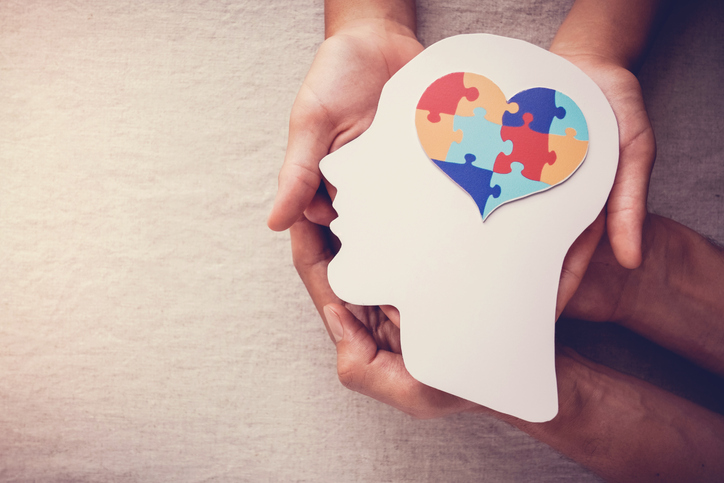Living with neuromuscular disease (NMD) involves specific challenges — some physical, some strategic, some structural — that can create stress and contribute to changes in both physical and mental health. Can meditation, mindfulness, and other relaxation practices help? Yes, says Paige Lembeck, PhD, a pediatric psychologist and assistant professor of Clinical Child Psychology at the Yale Child Study Center in New Haven, Conn. Paige treats people who experience chronic headaches, muscular dystrophy, and other neurological conditions. Here, she sheds more light on how meditation can make a difference.

Can meditation help in specific ways with the management of neuromuscular disease?
Absolutely. Tons of evidence proves that meditation changes a person’s physical state, and these interventions are commonly used to help people with all sorts of physical symptoms, such as chronic pain. We have learned that relaxation and reduced stress can promote healing and reduce inflammation in the body, which is consistent with what we know about the “mind-body” connection being very real. Research shows that meditation, mindfulness, and similar stress-reduction techniques can especially help with cardiac and respiratory health. If people feel more comfortable and less anxious with the help of meditation and mindfulness, they are also likely to cope more effectively with procedures, hospitalizations, and other aspects of treatment for NMD. Overall, there is a mountain of evidence showing that supporting one’s psychological health can also lead to more positive physical health outcomes.
How does one know if meditation is right for them?
Meditation, just like drinking water or getting a restful night’s sleep, is something that is beneficial for everyone. Having said that, the best way for someone to know if meditation is a good fit is to try it out! Like any new skill, such as learning to read or playing a new video game, it is best to practice it regularly for brief periods of time (it really does take practice to do it well!). At first, it is best to practice during non-stressful times to build fluency in using the skill before applying it in times of higher stress. A patient, persistent approach is better than simply trying it just once and then dismissing it as ineffective. I encourage those who are new to meditation to think about their own schedule and to see when it might make sense to fit it into their routine. For example, many people like to use meditation as they are waiting for an appointment or before falling asleep at night. If used regularly, it becomes ingrained as a useful daily habit that becomes much more automatic and helpful.
What do meditation and mindfulness practices consist of? How much time is needed to incorporate these practices into a daily or weekly routine?
There are many different types of meditation and mindfulness. Both have the goal of helping us slow down, be more aware of ourselves and our senses, and turn off our body’s fight-or-flight response (also called our autonomic nervous system response). They promote relaxation and help us pay very close attention to our emotions, thoughts, and whatever else is going on in the moment. Often, they involve exercises and prompts to use skills such as deep breathing or to gently direct our attention to helpful thoughts or images. Also, meditation and mindfulness encourage a person to use all their senses, with the rationale that doing so deepens the experience and makes it much more powerful.

In our age of media and technology, there are abundant “scripts,” YouTube videos, smartphone apps, audio files, and other tools online that are great guides to walk you through the process. When done effectively, mindfulness and meditation naturally evoke positive emotions and/or physical states to allow an escape from stress or unpleasant physical sensations. For example, if a person loves skiing and uses guided imagery to think deeply about an exhilarating, bright day on the slopes, that person is essentially creating a state of mind not too different from being there in reality.
It is possible to use these strategies as you are going about your day without them interfering with anything else on your schedule. For example, there are ways to walk and to eat mindfully. Rather than devoting large chunks of time to using these skills, I recommend incorporating them more frequently throughout the day or week in small amounts, which requires only a few minutes at a time.
What are some good resources for people interested in meditation?
Some popular apps with meditation exercises include Calm; Headspace; Buddhify; and Insight Timer. There are also podcasts for those who prefer this format, such as 10% Happier. The Imagine Project and Mindful.org are great websites as well. In addition to these, there are numerous books and publications on the topic.
Are there other tools or self-care practices people with chronic illness or disabilities can use to maintain their mental health?
Relaxation techniques are always useful, such as diaphragmatic breathing, progressive muscle relaxation, and cognitive-behavioral strategies that involve changing one’s thinking and actions. Cognitive techniques can be used to catch common thinking mistakes, such as catastrophizing and changing one’s thoughts to be more helpful. And a strategy used to treat depression, and one that can help prevent depression, is something called “behavioral activation” or “pleasant activity scheduling.” This strategy is just what it sounds like in that it emphasizes the importance of protecting time for and engaging in positive activities that boost one’s mood. As with physical health, healthy habits in general serve as the foundation for one’s mental health as well. So, ensure you are getting good exercise and eating, hydrating, and sleeping well. Of vital importance is also community support — connecting with those who are also affected by NMD.
What advice do you have for those living with neuromuscular disease, especially during a difficult time of change?
Above all else, it is important to remember that many families affected by NMD live fulfilling, happy lives and find ways to be resilient despite adversity. It is totally normal to have low moments or even low days in times of stress, so validating a range of emotions without judgment and just being a great active listener to those who are struggling can go a long way. It is important to find social support, communicate openly, be willing to try new things that may help, and try to look out for those “silver linings” that are often tough to see at first.
In addition to supporting a person with an NMD, it is important to support and take care of everyone’s mental health within a family. Youth with NMD often are reassured by developmentally appropriate explanations, opportunities to ask questions, and being given choices or a sense of control in general. It is important to look for ways to boost one’s independence whenever possible. In times of stress, people benefit from structure, routine, and access to pleasant, enjoyable activities that can reduce anxiety and maintain a sense of normalcy. Professional mental health services are recommended (and can be extremely helpful) if adjustment or coping concerns begin to impact one’s overall happiness, relationships, or functioning at school or home.
